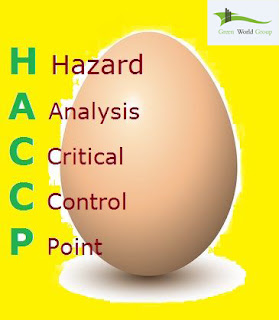Introduction:
HACCP(Hazard Analysis and Critical ControlPoints) is mostly a food safety management system that centers on proactive
approach of prevention for hazards rather than inspection of finished products.
HACCP addresses all biological,
chemical and physical threats related with food safety. HACCP has been effectively used in food and pharmaceutical production
in identification of potential safety hazards and in taking key actions to
eliminate or reduce the hazards caused by them. The HACCP system can be charity at many steps of production and treating
to ensure food safety and protection of public health.
The
concept of HACCP was incepted in
1960s when Pillsbury designed and production of food for space journeys for NASA
- the 1st venture of its kind. After that the impression was internationally standard
and out-of-date methods of inspection were substituted by science based food safety management system. HACCP plans have so far facilitated together
the govt and food industry in workwise allocating their possessions in beginning
safe practices for food production and providing effective auditing of the same.
Legislations place the responsibility of making the food safe on food operators
and HACCP software are designed to
assist operators in achieving the same. HACCP
system certifications are offered by only few commercial bodies. The concept of
HACCP is still almost untouched in
developing countries due to lack of knowledge and proper approach.
HACCP
food organization system is not an independent pgm in itself. It is built on
some pre-requisite databases like SSOP (Sanitation Standard Operating
Procedures) and GMP (Good Manufacturing Practices). Thus the efficiency and
efficiency of HACCP depends on both
GMP and SSOP. Therefore food workers having weak GMP and SSOP often face food
safety problems and if these issues are not addressed properly these can result
in serious consequences for public health.
The
Principles behind HACCP:
HACCP
is outlined by seven basic principles required to maintain hygiene standards.
1. Analyzing Hazards: Identification of potential hazards including
biological, chemical and physical.
2. Identification of Critical Control Points: Determining the point at
which hazards may occur, causing harm to consumer.
3. Establishing Critical Limits: Setting parameters for the control
points to identify any activity that is out of control.
4. Implementing a Monitoring System: To monitor critical control
points.
5. Establishing Corrective Action: Defining corrective actions that
will be taken when any parameter of critical control points is breached.
6. Establishing Procedures for Verification: To verify that the above
5 points are effectively working.
7. Establishing Reporting Procedures: These reports will be a kind of
evidence that the system is effectively working.
HACCP
and Food Safety:
Since
the advent of strict regulations related to food safety, HACCP documentation and programs are on a roll. Options existing in
the market for food operators to comply with food safety regulations have improved
many folds with the awareness in the industry. E-Control Systems, Inc.,
recently threw IntelliHACCP, a
wireless answer specially for HACCP submission
giving food operatives a type of freedom in handling their food safety
standards through a lone platform. Q22, launched by HiQ Software Checking Inc.,
from Kitchener, Ontario has also been an innovative product for HACCP obedience and rigorous standards
of ISO 22000. HACCP now, do not do HACCP by Nor back, have Ley and
Associates LLC etc. also been leading software for implementing HACCP. But it's not all about choosing
the best software for HACCP
compliance; other than this researchers working on various aspects of HACCP have identified three barriers
which hinder the successful HACCP
implementation. These are knowledge barrier, attitudinal barrier and behavioral
barriers.




No comments :
Post a Comment